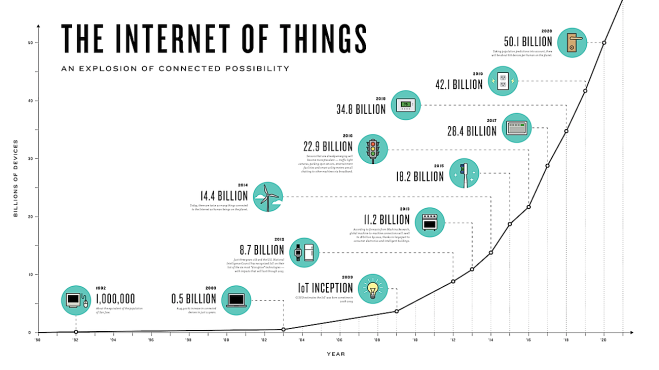The way in which technologies have developed so rapidly in the past 10 years in incredible. Civilisation went from the most basic of technologies to now, where were are developing hyper-speed computers and robots that think, feel and have the same, if not better, decision making skills as real human beings.
That is what this post will be discussing today. Web2.0/3.0, Information Architecture, the Internet of Things, and the introduction of Artificial Intelligence to the world. 
Image source
Firstly, lets talk about what Web 2.0 and 3.0 actually means!
Web 2.0 was a term that was first coined by Tim O’Reilly circa 2004. Web 2.0 is essentially a new and better version of Web 1.0. However, Web 2.0 is a socially constructed web system and it provides more new ways to provide data and information to its end users. Web 3.0 is an even newer version of Web 2.0 and is synonymous with the term ‘Semantic Web’, even though the definitions between the two vary.
Web 3.0 is not only a socially constructed web system, but also a contextually reinvented system. Essentially it means EVERYTHING is connected to each other. You could be listening to a song in the car, and as soon as you walk through the front door of your house, the song will have kept playing on your home sound system as if you never left your car. The Semantic Web is considered to be an extension of Web 3.0 in which it has technologies that enable users to create data stores on the web and create a specific vocabulary.
The next step after that is Web 4.0 and 5.0. Web 4.0 is still in the process of being created and released, but essentially it is a much more self -aware system and is able to solve a lot more. Web 5.0 is known to the computer world as the ‘Wise Web’ system. It knows everything and can connect to everything- even you!
Information architecture is essentially the backbone of Web 3.0. This architectural system helps to define and connect shared information environments together. It labels websites and organizes and categorizes everything from every webpage to online communities. This helps the web to be a more usable and functional place for all users.

Image source
The next aspect we need to define is the Internet of Things (IoT).

Image source
The internet of things are actually physical objects, such as cars, phones and computers, that have been embedded with certain technological and electronic software. These can range from sensors to the ability for the object to have a network connectivity. Overall, this enables these physical objects to exchange data and information from one object to another, and also to retain the data they have received.
The reason that the Internet of things has become so useful is that it has enabled people to control physical objects from a distance. The benefits of these physical objects or ‘Smart Devices’ as they are known, is that they are capable of making people’s lives just that little bit easier every day. These cyber-physical systems can have great benefit to the business world as well as benefiting the personal lives of people as well.
now to my favourite part… ARTIFICIAL INTELLIGENCE!

Image source
Artificial Intelligence has been portrayed in so many films over the past 50 years (if not more!) The notable films are, Blade Runner, A.I, Bicentennial Man, and most recently, Ex Machina. Artificial Intelligence is a fascinating topic. There are so many philosophical questions that can be asked in relation to AI. What is AI really? Do we have the capabilities of making robots smarter than us? Will they be able to make decisions based on real emotions that they feel. Can they feel at all? What separates us from them anyway?
Artificial Intelligence really marked a breakthrough in the technological capabilities of human beings. To be able to create a machine that ‘thinks’ and ‘behaves’ like a human being is extraordinary.
Scientists enjoy creating AI because many have said that it helps human beings to learn more about themselves. Artificial Intelligence was a concept that was formally recognised in 1956. There are many definitions for what AI exactly is, and the differences in them are due to some scientists creating the definition based of reasoning and thought processes, while others base their definitions on the behaviour of the AI.

Image source
The main question that many people ask is why would we want to create machines that have the capability to be smarter than us? Does the very notion of having a world that could one day be potentially overrun by machines not terrify people? Yes, it is true that AI has the potential to be incredibly helpful to society, but do we want a society controlled by machines?
There are so many questions, time is racing ahead so fast and new technologies are being created so rapidly. What will the future become? I guess we’ll just have to wait and find out!
Great post, I like your style of writing
LikeLiked by 1 person
Nice blog – love the graphics & good coverage of the topic
LikeLike
Thank you very much!
LikeLike